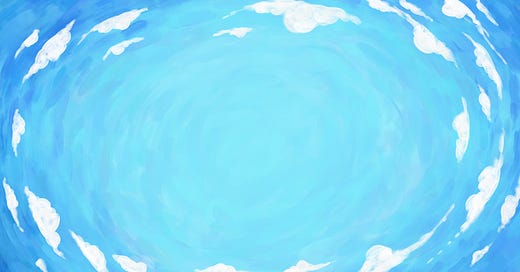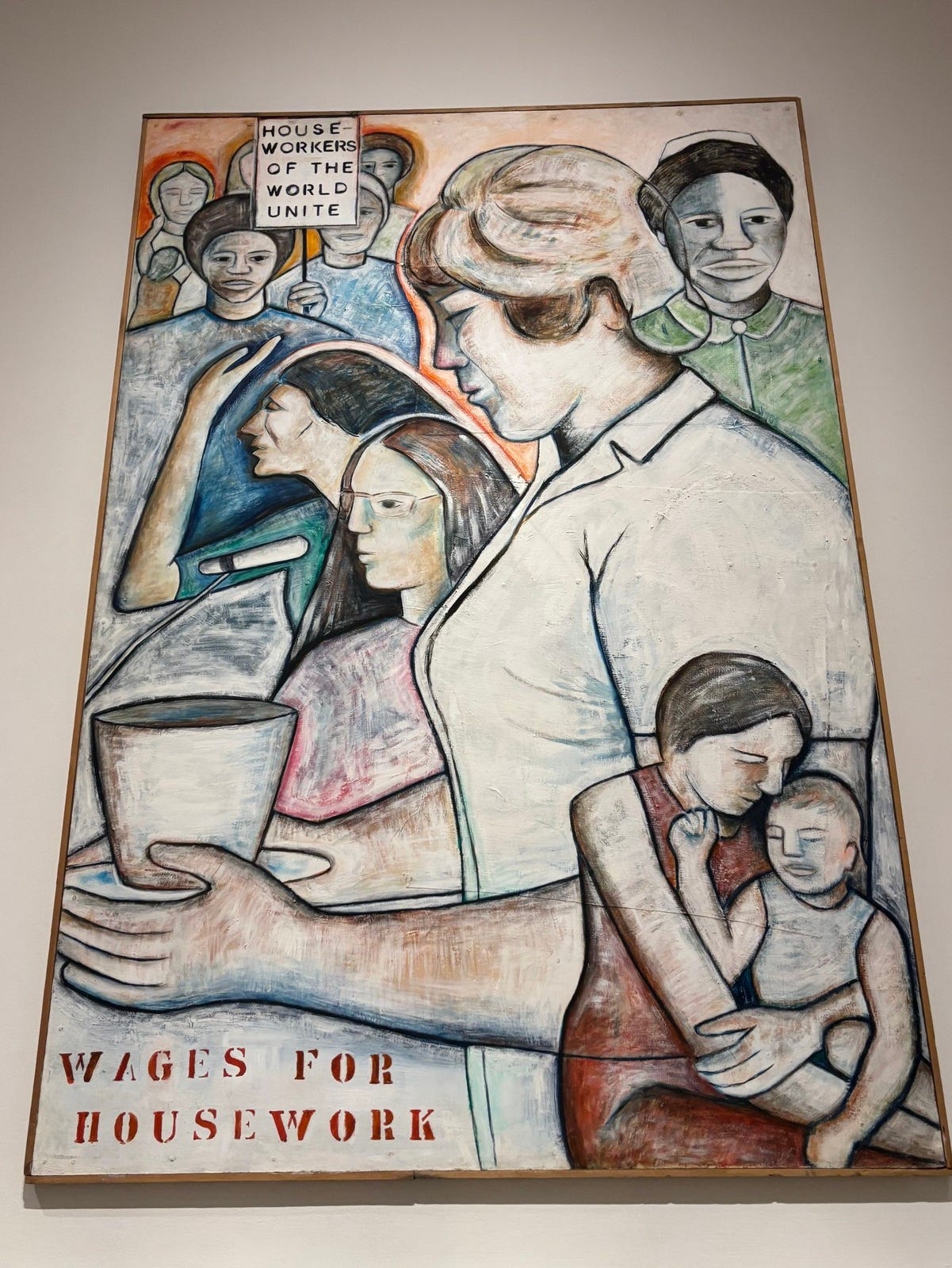Political Metamorphosis Through Paintings
Paintings paint a vision and provide nuance. We also see and feel things words can’t or won’t express.
👋🏼 Hey, I’m Joanna! I’m a communications consultant sharing insights and ideas relating to democracy, wellbeing, business, AI, culture, spiritualism and the human condition…read on if this has piqued your interest.
“This is precisely the time when artists go to work. There is no time for despair, no place for self-pity, no need for silence, no room for fear. We speak, we write, we do language. That is how civilizations heal.” – Toni Morrison.
“Artists are the real architects of change, and not the political legislators who implement change after the fact.” – William Burroughs.
These are the quotes we all needed to read and hear on the day of the U.S. Presidential election result, regardless of who you voted for, the country you live in, or the citizenship you have. Art reflects what is, and what is to come. Political metamorphosis can happen through paintings, and paintings can metamorphosize political futures. It’s quite incredible, isn’t it?
Art has a habit of explaining things that we can’t or won’t express directly in words. Feelings communicated through a stroke of paint, the placing of an object or person, the focus of one thing and the shadow of something else somehow brings them into being more than words alone. It makes us sensitive to things we weren’t aware of before, and reveals perspectives that we may have subconsciously overlooked, ignored or stereotyped. This is what makes art a powerful and transformative medium for communication.
Amidst the oddity of the current political environment, how we make sense of it, how to respond to it and help metamorphosize it into something that we can all share and unite in, paintings help us make sense of the now as well as the political direction we’re seeking to move towards for the future.
It strikes me as strange how often I see religion expressed in art, but less politics in art, especially modern art. Perhaps we think politics too troublesome, brutal and complicated, not worth lifting a paint brush too. Yet it enables the painter to carefully think and for us to carefully make sense and understand a subject better. Which makes politics a painting worth painting, across all groups and backgrounds.
Could a revival of the practice of perceiving politics through painting enhance our collective understanding of current times?
Would it bridge the gap of differences, the perceived illusions and the real ones?
A painting expresses a variety of ideas, thoughts and emotions through different styles and subjects. When we look at a painting, it pulls something out of us – a new perspective, empathy, hope, wonder, awareness – and stares right back at us in the face.
A painting is inclusive. It wills you to consider the thoughts and feelings of another by inviting you to think. It doesn’t impose. It seeks to provoke and open you up to something unexpected. Something you may have otherwise been unaware of.
In contrast, a portrait seeks to give us a deliberate construction of a person, their appearance and what they represent. Rather than a painting pulling something out of us, a portrait seeks to put something onto us – a new perception of a person, their power and brilliance. A portrait is dominant; it wants to command your attention and admiration by dazzling you. It will impose. It seeks to capture your approval through the technique of the artist.
This is why paintings make an excellent medium for us to understand and capture the essence of a political moment in time, especially when we are bombarded with a constant conveyor-belt of voices, text and video telling us what to think. How are we to truly think and feel on a topic of such complicated and vast magnitude through these kinds of mediums? Especially right now?
If you’re like me, I like to think about the “bigger picture” moments of life through silence, space and solitude.
Paintings offer this with a high gravity of attention, presence, precision and power. In an age of complexity, isolation and lack of understanding, perhaps the simplicity and communal nature of a painting is what it takes to deepen our understanding of politics, its participants and our political environment.
And with our attention fraying at the seams by everything we must buy and watch, the places we must go and see, the people we need to catch up with and the emails we must respond to today, there’s something powerful about taking the time to walk away and deliberately sit with the stillness that a painting provides, a willingness to embrace the time to think about why a painting has been painted the way it has been and what instigated the painter to paint it in the first place.
I’ve been thinking about protests and art a lot recently for a project I’m working on. By chance, I came across a exhibition in Edinburgh recently about women art and activism at The National Galleries of Scotland.
There’s something deeply vivid and human about the women highlighted in this exhibition and the fact that they took the time to translate their message through the process, labour and effort of painting.
Most of us are so used to consuming “digestible content”, information and writing by scrolling scrolling scrolling. Yet a painting offers the human presence, touch and portrayal that gives us a direct sense of connection with the artist who carefully and deliberately conceived it. A painting takes full commitment and space for dialogue, unlike a short scroll of “digestible content” which is often forgotten as quickly as it was created.
Paintings have details – often important and truthful ones – which we may accidentally skim over if reading or listening. Paintings willingly require our eyes to totally focus because they often absorb us completely after a brief glance.
Paintings don’t demand attention. They naturally command you to pay attention to them through your own curiosity, intuition and feeling.
Most significantly, paintings do something to our souls.
This is why understanding and changing politics through paintings is worth contemplating.
I’m a trained law academic, and I play in the playground of entrepreneurship and business. I love and need details. But the reality of an idea – the good, exciting and meaningful kind – tend to stem and start from dream-like visions and pictures in our heads. A vision board of sorts.
And when we turn that picture and vision in our head into a painting, we plant a seed to actively grow and work towards, both consciously and subconsciously.
Neuroaesthetics, an emerging field which explores the biological basis of aesthetic experiences, highlights that art and visual stimulation can impact wellbeing and decision-making. Rather than a “nice-to-have” the arts are fundamental to our individual and shared sense of humanity.
This is why people seeking to make a positive difference in politics and who wish to create a sense of shared community in their ideals would be wise to explore it through paintings and the peace, wellbeing, wonder and vision that naturally arises through them.
Placing art at the centre of politics, rather than on the sidelines, could also reinvigorate the lost centre-ground of politics, the nuance take that invites us all to contribute, feel seen and to participate as a matter of norm.
Call me naïve, but I think if we had the patience, open-mindedness and willingness to give it a go, crafting more political ideas through paintings and using paintings as a medium for political metamorphosis could add a softer dimension to politics which would better illustrate the art of democracy and the story it holds in our lives.







Absolutely. I feel the same about photography as well.
It's probably why governments are so reluctant to fund the arts (all arts) properly